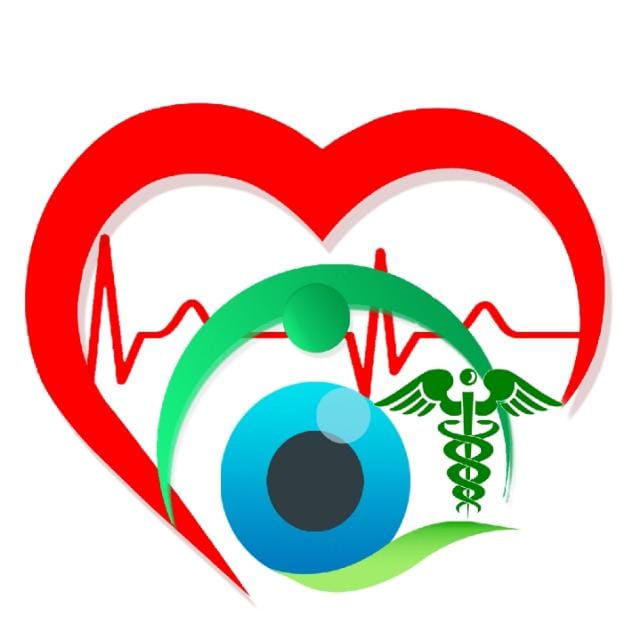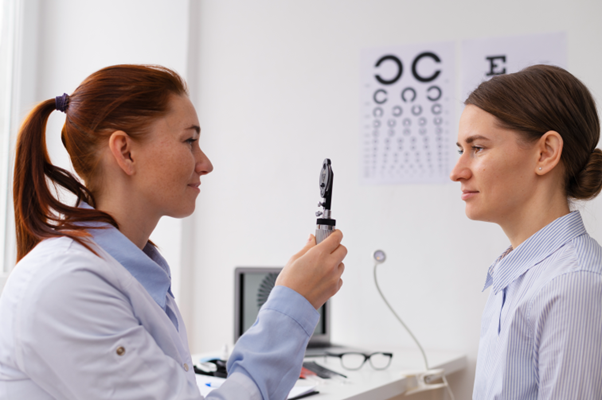Protecting Your Eyes from Air Pollution:
A Guide to Eye Health
Our eyes, precious and essential, are highly susceptible to the damaging effects of air pollution. The very air we breathe can be a mixture of pollutants that not only impact our lungs but also trigger a spectrum of eye issues, from minor discomforts to more severe problems. This sensitivity highlights the importance of recognizing the dangers and adopting preventative strategies to safeguard our vision in today’s polluted world.
The Culprits: Common Air Pollutants and Their Impact on Eyes
Air pollution consists of a variety of detrimental substances, including:
- Particulate Matter (PM): These microscopic particles, like dust, soot, and smoke, can irritate the eyes, resulting in redness, itching, and a feeling of grittiness.
- Gases (e.g., Nitrogen Dioxide, Sulfur Dioxide): These gases, often from vehicle emissions and industrial processes, can dissolve in the eye’s tear film, forming acidic solutions that irritate the delicate tissues.
- Ozone: A major component of smog, ozone can cause dry eye, burning, and discomfort.
- Volatile Organic Compounds (VOCs): These chemicals, released from various sources, can irritate the eyes and contribute to dry eye syndrome.
- Pollen and Allergens: While naturally occurring, these can be exacerbated by air pollution, leading to allergic conjunctivitis with symptoms like itching, redness, and watery eyes.
These pollutants can lead to several eye conditions:
- Dry Eye Syndrome: Air pollution can disrupt the tear film, the eye’s natural lubrication, leading to dryness, burning, and a feeling of grittiness.
- Conjunctivitis (Pink Eye): Inflammation of the conjunctiva, the clear membrane covering the white part of the eye, can be triggered by pollutants, causing redness, itching, and discharge.
- Allergic Conjunctivitis: Exposure to allergens in polluted air can cause severe itching, redness, tearing, and swelling of the eyelids.
- Corneal Damage: Prolonged exposure to pollutants can damage the cornea, the clear front surface of the eye, potentially affecting vision.
- Increased Risk of Infections: Irritated and dry eyes are more susceptible to bacterial and viral infections.
Recognizing the Signs: Symptoms of Air Pollution-Related Eye Problems
Common symptoms to watch out for include:
- Burning sensation
- Redness
- Irritation
- Watery eyes
- Itching
- Increased sensitivity to light
- Blurred vision
- Gritty or sandy feeling in the eyes
- Eye fatigue
Taking Action: Protecting Your Eyes from Air Pollution
While completely avoiding air pollution is often impossible, several steps can be taken to minimize its impact on your eyes:
- Protective Eyewear: When air pollution levels are high or during outdoor activities, wear wraparound sunglasses or protective eyewear to shield your eyes from pollutants.
- Proper Hygiene: Wash your hands frequently and avoid touching or rubbing your eyes, which can transfer pollutants and irritate them further.
- Hydration: Staying well-hydrated helps maintain adequate tear production, keeping your eyes lubricated and flushing out irritants.
- Healthy Diet: A diet rich in omega-3 fatty acids, found in fish, flaxseeds, and walnuts, supports eye health and can help reduce inflammation. Consume plenty of fruits and vegetables rich in vitamins and antioxidants.
- Artificial Tears: If you experience dry eye symptoms, use lubricating eye drops (artificial tears) as recommended by an eye care professional.
- Limit Screen Time: Extended screen use can exacerbate dry eye. Take regular breaks using the 20-20-20 rule: every 20 minutes, look at something 20 feet away for 20 seconds. This rule helps to reduce eye strain and dryness caused by prolonged screen use.
- Avoid Contact Lenses During Irritation: When your eyes are irritated, avoid wearing contact lenses, as they can trap pollutants and worsen discomfort.
- Indoor Air Quality: Use air purifiers with HEPA filters to remove particulate matter and other pollutants from indoor air.
- Limit Outdoor Activities During Peak Pollution: Check local air quality reports and limit outdoor activities during periods of high pollution.
When to Seek Professional Help
If you experience persistent or severe eye symptoms, such as significant pain, vision changes, or excessive discharge, it’s crucial to be proactive and consult an eye care professional. They can diagnose the specific issue and recommend appropriate treatment, which may include medicated eye drops, ointments, or other therapies. Early intervention can prevent complications and protect your long-term eye health.
Protecting your vision is a vital part of overall health. By understanding the effects of air pollution on your eyes and taking preventive measures, you can maintain healthy vision and minimize discomfort in today’s environment.


